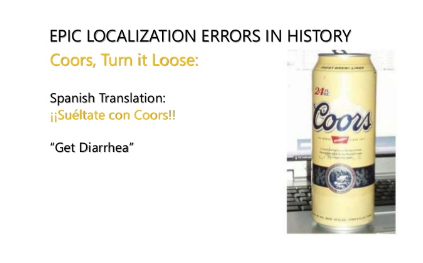Spanish SEO Guide
Spanish SEO Guide
Why You Need Spanish SEO
An Increase of Spanish Speakers in America
To validate a Spanish SEO campaign, consider how ingrained Spanish speakers are in the US. America (with 42 million native Spanish speakers) has almost as many as Spain.
Furthermore, Spanish-speaking populations aren’t isolated in border states such as New Mexico and California; 23.2% of Floridians and 18.2% of New Yorkers speak Spanish. Spanish is a nationwide language embraced by many people throughout the world.
Mexico’s Ecommerce Explosion
There’s no denying consumer embrace of ecommerce. The Mexican ecommerce market is projected to eclipse $18.5 million in 2020. User penetration will be 39% in 2020 and is expected to hit 57% by 2025. The average revenue per user is expected to to equal $370.
Pandemic
Almost 40% of Mexicans surveyed spent more time searching for products online after the COVID-19 lockdown. 35% of Mexicans spent more time buying products on the internet than they did before the outbreak.
Follow Amazon’s Lead
Amazon is an undeniable ecommerce behemoth. In 2015, Amazon launched in Mexico. By 2019, it attracted 50 million users, providing services to 25 cities daily. As of October 2020, the monthly Amazon Prime cost equates to $4.6 US dollars.
For many US-based companies, Spanish-speaking markets are a comfortable first endeavor at international targeting since so many Spanish speakers are present in the US.
Communication Breakdown
However, many brands (even large established ones) do a poor job in applying Spanish SEO, misunderstanding how to relate to buyers in a different language as well as location. Spanish SEO and international content marketing is not simply translating your brand’s content from one language to another.
Effective international marketing starts with partnering with a Spanish SEO service that can introduce you to a new market as well as ensure your messages captivate and convert the intended audience. In short, a Spanish SEO can help your brand “speak” the language so it resonates with the Spanish audience and gets the sales results you want.
Expanding business to an international market of a different culture and language is a challenge. It’s especially daunting if you don’t speak or live the language. A huge reason to consider help regarding Spanish SEO and international content marketing efforts.
Businesses on the verge of Latin and/or international expansion are paralyzed by related search engine optimization and content marketing barriers:
How do I choose the right international market to target?
How do I square off against competitors already established in my niche?
How do I create content when I don’t speak the language?
This guide explores Spanish SEO and best practices regarding international content marketing to help you:
Validate a market
Analyze the competition
Implement and properly execute
Validate Your International Market
First, ask yourself: where should I grow my business?
Speakers
Consider targeting markets with the largest number of speakers.
For example, Mandarin Chinese and Spanish languages are prime considerations, for the languages have an enormous number of native speakers worldwide.
Spanish has one big advantage — it’s hugely relevant in the United States.
However, the number of native speakers doesn’t equal potential market size. So, while this is a good place to start, you need to analyze internal data and qualify leads to figure out which new market is right for you.
Lead forms
Visit your sales department and inquire of sales outside the country or about disqualified leads from another region.
Analyze any trends you find—you might be surprised to find leads you’ve been missing!
Volume and traffic value
Now, it’s time to analyze which market has the most value based on existing page traffic. Start by tracking where your traffic comes from and which pages get the most international visitors.
Next, gauge the value of your traffic.
Suppose a review of your site reveals:
– 1200 monthly visits from Germany
– 680 monthly visits from Spain
At first glance, the German market drives more traffic but are those visitors your most qualified leads?
To see which country’s traffic has the most value, appraise each page visited, assigning weight as each page contributes to the conversion process.
However, pages may have different weights (Pages that support the conversion process but are not necessary to complete it, such as FAQ or About Us pages, should weigh less.)
Once you have the value of every page involved in your conversion process, multiply the volume of traffic from each country by the value of each page to determine the country’s value.
As you continue the internationalization process, remember that the percentage of people from another country who are fluent in English compared to non-English speakers is, as a rule, lower. If you’re committed to international outreach, you’ll need to create a PPC campaign in your target country and run it for a couple of weeks to see clicks and conversions.
Social networks
Next, gauge international social media analytics. If you’re already tracking this data, this step is as simple as asking your social media manager for the demographic information of your followers along with any info on interactions with your brand.
Use social media analytic software, such as Followerwonk, to track the locations of users who follow you on various platforms. Get deeper insights from social listening tools, such as HootSuite, to learn what international audiences think of your brand (and about its potential absence from their market).
Potential market size
Regarding Spanish SEO, one of the simplest ways to know the potential size of a given market is to check the volume of your keywords after translation. This gives you a good idea of the potential traffic your site could receive if you were to enter that market.
There are three steps to estimating the volume of your keywords in the new market.
Translate Keyword Research
First, you need to translate your English keyword research—just make sure your list of English keywords is up-to-date.
Use an automatic translator for this part of the process. However, automatic translators are never 100% correct.
If you’re translating into Spanish, use Wordreference and SpanishDict. Both make faithful translations from English to Spanish and include annotations that help identify region-specific vocabulary.
This is useful when your target language has subtle variations across many different countries.
Expand Upon Keyword Research
Second, expand upon your initial keyword research. Automatic translations are a great start but method won’t uncover all of the most common keywords in your target market. Some markets may have words that don’t even exist in English!
To update your list, see which synonyms the translators offer and add these new words. After doing this, you will end up with a much larger list.
Find a Transcreation Service Provider
And finally, if you want your keyword research to be as thorough as possible, then you need to know your target language or get the help of a transcreation service.
Use tools like the Moz Keyword Explorer to find keywords you may not have considered. Keyword Explorer allows you to select the country in which you want to carry-out the investigation, so your data will be much more targeted.
When you believe you have all the necessary keywords to evaluate the volume of the market, the only thing left is to add up the search volume to create a traffic estimation for your targeted market.
Market growth trend
You can determine trends by using keyword research and entering the most relevant keywords in Google Trends or any other traffic volume analysis tool.
Conversation
Analyzing the tone of the conversation about your product or service abroad is a useful way to gauge the mood of your target audience. This rapid monitoring can be done with specialized or basic tools.
Proof
Lastly, validate opportunity by analyzing data obtained and weighing pros and cons. Target two large markets with huge growth potential. In addition, be sure social cues indicate there will be a positive reception of your brand and/or products.
Conduct a test using an ad that proved popular with an English-speaking audience:
- Establish a modest advertising budget.
- Hire a transcreator to localize content for two potential audiences.
- Launch an Adwords or Facebook campaign to target a new audience.
- Analyze results. If cost per conversion in the new market is equal to or lower than cost per conversion in your local market, you are on track. If the cost is a bit higher, expect a lower return on investment.
If you’re unsure which market suits you best, go back to square one and consider other languages. There’s no such thing as too much research when you’re making a big investment in future growth.
Analyze the Competition
Once you have decided on a market, the next step is to analyze the competition.
Competition selection
To discover who your competitors are in the new market, make use of your Keyword research and analyze the SERPs.
Remember, Google uses your location to show personalized results, so it’s not enough to use incognito mode, nor is it enough to enter Google with the CTLD of the country. Instead, you’ll want to use a tool like Moz SERP Analysis to examine SERPs that haven’t been skewed by your location.
I recommend checking as many SERPs as possible and export them in CSV to make it easier for you to work since the next steps will be to eliminate duplicates and visit each site one at a time to determine which of them can be considered competitors.
As you examine the SERPs, you will find both direct and indirect competitors. Add both to your list—just because the latter doesn’t offer the same products or services as you, doesn’t mean you can ignore them completely. For now, separate indirect competition from direct competition in your list.
Once you have your full direct and indirect competition lists, cross-reference your list with other tools that yield similar sites, such as Alexa, and not-so-specialized sites, such as similarsites.com, for you might find sites you overlooked.
Once you have a sufficiently robust list, it is time to move on to the following steps: analyzing the authority, traffic, content and social networks of your competitors.
Authority analysis and backlinks
Analyzing your competitors’ domain and page authority is a good way to gauge industry website standards in your new market. You’ll also get a good idea of the bare minimum requirements your website needs to compete along with important metrics, such as how many backlinks your top competitors are earning.
Tools like Open Site Explorer allow you to analyze your competitors’ backlinks, and see their spam score to verify the quality of sites pointing to their pages. This is useful for understanding how difficult it will be to earn higher quality links and eventually surpass them in ranking.
Traffic analysis
Similar to gauging site and page authority, understanding your competitors’ traffic volumes will help you determine what numbers are considered high, low, and average in your industry.
Another useful trick is to separate the volume of your competitor’s traffic by region. This will help you identify regions your competitors target more heavily, which may help you plan for more strategic content creation and distribution down the line.
Don’t forget to also gauge data such as bounce rate, page views per user, and average time on site. These metrics give you a benchmark you need to beat if you want to beat out your competitors and win over your new audience.
Content analysis
To fully understand your competition and its audience, analyze what type of content attracts the most eyeballs and earns the most links. This task would be laborious without the help of tools like SEMRush and Hrefs.
Fortunately, once you’ve entered their pages, it’s very easy to get a clear idea of what exactly is winning your audience’s attention.
Make a list of the best elements on each page:
-CTAs
– quality of writing
– page extensions
– images
– page freshness.
All of this information will help fuel international content marketing efforts and provide guidelines to create your digital marketing plan.
Analysis of social networks
Finally, check the social networks of your competition to know the commitment of users in the industry and the type of content and interactions that they prefer.
Proper Execution of Spanish SEO and International Content Marketing
Proper Spanish SEO and international content marketing endeavors require selecting the right site structure for your individual campaigns. In addition, you want to send signals to search engines regarding serving the right version of your content based on language and geography.
Select the right structure
There are three options to introduce your site to the new market: subfolder, subdomain, and ccTLD. The selection of one structure over the other will depend on your objectives.
On the one hand, if you want to enter a new market thinking only about the language use a subdomain or subfolder.
On the other hand, if you want to think about the geographical location, you should choose a ccTLD or a subfolder.
Language
Subdomain & Subfolder
en.sitio.com
site.com/en/
Geographic location
cctlds & Subfolder
sitio.com.ar
site.com/ar/
Combination of location and language
Subfolder
Site.com/es-ar/
Each one has advantages and disadvantages:
| TYPE / DETAILS | KEEP THE SITE AUTHORITY | HAVE EVERYTHING WITHIN A SITE | ADDITIONAL SECURITY CONSIDERATIONS | IDEAL FOR LOCAL BUSINESSES |
| Subdomain | X | |||
| Subfolder | X | X | X | |
| ccTLD | X |
If you plan to enter a very competitive market (e.g., “swimsuits”), you’ll probably want to structure your site using subfolders.
Alternatively, you could try to build trust with your target market by using ccTLD—a gesture that shows you’re willing to adopt local languages and cultures.
Once you have decided on what structure of URL you are going to use, it’s time to include it on your site. If you are using WordPress, the WPML plugin is going to make things easy for you; it enables you to run a multilingual website with a single WordPress installation and choose the language URL format that best suits your needs:
- Different languages in directories (sub folders)
- Different domain per language (sub domain or ccTLD)
- Language name added as parameter
Select the content
Now, it’s time to create content for your new target audience. I recommend revisiting your website analytics to see which pages have attracted the most attention both in your home market and outside the country.
Next, classify your content into one of three categories: main, informative, and local.
“Main” content is content that specifically describes your product.
“Informative” should be reserved for most other types of content, especially content that interests your audience but doesn’t directly pertain to your product.
“Local” is used exclusively for content that targets very specific audiences, such as special products, events, and contests.
Now you need to select which content you’re going to translate. Obviously, you don’t want to translate content targeting Wichita, Kansas for your new demographic in Madrid, so you should probably avoid “Local” content for now. Instead, focus your attention on your most popular “Main” and “Informative” types of content.
And now the million-dollar question: will you translate or transcreate?
Translation
Translation is expressing in one language what was originally said or written in another language. It’s very useful when you need to transcribe exact words from one language to another, especially when it comes to things like legal or highly technical services, such as insurance.
When translating content word-for-word, you need to take care that what’s said in one language is perfectly preserved during the translation process. While this process can be done by machines, you should steadfastly avoid free translation programs—they’re prone to many errors.
Transcreation vs. Localization
Transcreation is the process of taking a message created in one language and transferring it to another language while taking into account the cultural context of the text.
Transcreation necessarily takes certain liberties with the original content to establish a deeper, more empathetic connection with your target audience. Despite the language barrier, creating content is easy with a good transcreator at your side.
Further Reading:
What is Transcreation and Why is it the Best Way to Globalize your Content
Creation of new content
And, sometimes neither translation nor transcreation will work well. This is especially true when you’re trying to create highly localized, original content for a select portion of your audience.
To figure out what type of content you should create, revisit your competitors and draw inspiration from their most popular content.
An example of new content development is the Mortgage Guide (Guía de Créditos Hipotecarios) by Vivanuncios, inspired by Zillow’s the popular Home Buyers Guide.
You can also go to forums, and local question and answer sites—you’re likely to find some great ideas there.
Once you’ve decided when you need to create new content, when to translate, and when to transcreate, you will be ready to create your style guide.
Content style guide
A style guide includes all the rules content creators must follow to represent your company accurately. It should cover things such as style, voice, sentence structure and the use or non-use of certain terms.
Make clear, concrete decisions vis-à-vis translation and transcreation.
Your guide should indicate whether or not services should be maintained in the original language and include complementary keywords or get translated and optimized for SEO purposes.
Ideally, this document should be created by someone within the company who is intimately familiar with the brand and can perfectly capture the needs of the company. This person should also be able to understand the needs of the sales and marketing team in the new market.
Ensure all clients, third-party vendors, designers, copywriters, translators, etc., clearly understands how to capture and convey the spirit of your brand.
Otherwise, mistakes could be made…
To create your style guide, you must include:
- Justification, which describes the importance of the translation and/or location of the content, as well as its consistency.
- Description of the potential market, with the ideal client profile for writers and translators to know the person whom they will be addressing.
- Important grammatical rules. Each language has rules, but in some cases, writers may take licenses so that the content is written with slang terminology for greater impact. E.g., some anglicisms are widely recognized in other countries (marketing vs. márquetin), and sometimes it’s “cool” to use certain capital letters and abbreviations.
- Selection of preferred terms, taking into account SEO objectives and the tone of the brand. For example, decide if you prefer to say “Nickel” or “five-cent coin.”
- Audio-visual format. Answer questions about the number of images or videos that should be used, the dimensions, position, description, etc.
Further Reading:
Why and How to Create a Style Guide for Translations
Design
Remember people have different preferences or customs regarding site design; just because one design is considered sleek in America doesn’t mean the rest of the world will love it.
Review what the competition is doing, and seek advice from native designers to help you understand the best way to present your content.
Add Hreflang
Hreflang is the code used to let search engines know content targets a specific language or region. Search engines use it in their task to offer the most relevant content for their audience. It is one of the most important details when it comes to international SEO.
You can use the Hreflang tag to specify only the site’s language, location, or both. This is done by changing the country ISO (3166-1) and language (639-1).
The hreflang code must be inserted in the header of each page that has more than one version. This means that you must insert the same code both in the pages of your original site and its new versions.
Further Reading:
Hreflang: The Easy Guide for Beginners
Register in Search Console
Go to the international targeting configuration in Google Search Console and specify it.
Redirect
Finally, decide how you are going to let clients in other countries know you have a new site dedicated exclusively to them.
There are two ways to do this – Redirect your international visitors with a warning or without one. Both have advantages depending on the product or service you offer.
Forced redirection is ideal for products or services that have different characteristics and restrictions between countries (e.g., streaming services such as Netflix, where licenses are different from country to country).
Alternatively, redirects with a warning are best if you service customers around the world from your main site and ship products internationally (e.g., Amazon). While some customers might be there by mistake, others might be visiting the main version of your site intentionally.
These ads are also a great way to let people know that you now have a page in their language.
Make sure you consider your product/service, and your audience when you choose how to redirect international customers. In most cases, you probably don’t want to redirect them without warning—it can be risky, and possibly drive away customers.
It’s usually in your best interest to ask!
Conclusion
Are you ready to start your Spanish SEO campaign and devise an international content marketing strategy? Hopefully, you’ve come to understand targeting a new location or language requires experience and skill.
Consider us an agency with the technical knowledge of Spanish SEO and content marketing along with the public relations awareness to allow your brand to enter new international markets in an effective yet seamless fashion.









